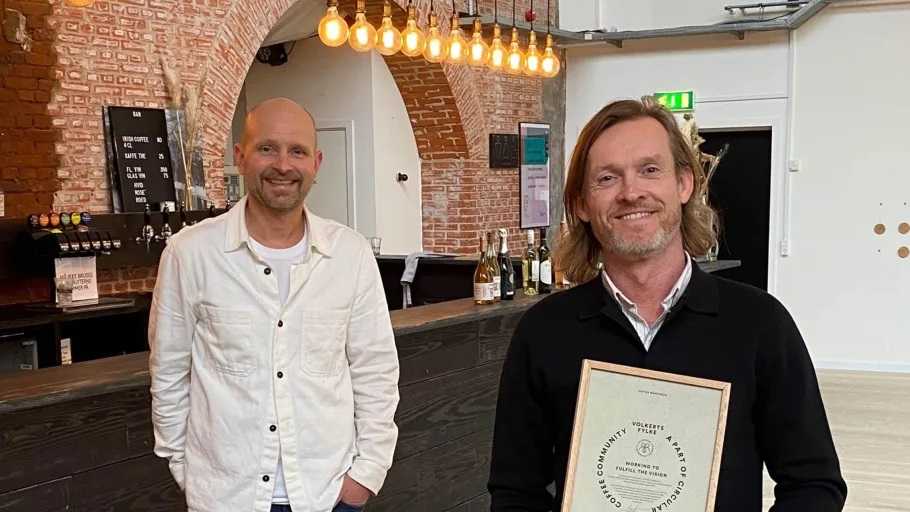MILAN – The number of companies in the Circular Coffee Community is growing steadily, and the first solutions and business models are starting to sprout. The community, founded by Swedish based coffee group Löfbergs, wants to make coffee 100 percent circular. By 2030, coffee should be a 100 percent circular resource. That is the goal of the Circular Coffee Community and a stark contrast to now, where less than 1 percent of the coffee’s nutritional value is being utilized.
The full use of the plant must double the earnings in the entire coffee value chain.
Fertilizer for higher ambitions
Those visions have resonated well with Danish food recycling company Daka ReFood and ecological venue Volkerts Fylke, who both take part the community. Together with Peter Larsen Kaffe, they have initiated a concrete collaboration within the framework of the Circular Coffee Community. Peter Larsen Kaffe delivers coffee to Volkerts Fylke, which sorts out the used coffee grounds. Daka ReFood then picks it up and produces energy and fertilizer from it.
The companies’ commitment to the community is motivating them to raise their circular ambitions
– We strive to get as much value as possible out of the food waste. We are well underway, but this is definitely only the beginning, says Lars Brødsgaard, Business Unit Director at Daka ReFood.
The community and business opportunities in the Circular Coffee Community are also right up the alley of Volkerts Fylke, says Jimi Kristensen, one of the founders of the organic venue.
– We have a clear position on the raw materials and resources we use. This is one of the primary motives when companies choose us as the venue for their events, and this also makes it financially sustainable for us, he says.
Sustainability on all bottom lines
Volkerts Fylke is also on its way to collaborating with the company Micro-Greens, which can utilize the nutrient-rich coffee grounds in its sustainable cultivation of sprout greens.
– That’s why the community idea behind the Circular Coffee Community is so bold. These are companies that, across industries and industries, can develop each other’s businesses and create new solutions that are both environmentally and financially sustainable,” Jimi Kristensen says.
According to Lars Aaen Thøgersen, Chief Innovation and Circular Transformation Officer at Löfbergs, this is exactly the idea of the community.
– We have a common obligation to utilize nature’s resources optimally and circularly. Our primary product is coffee, but we know that the coffee plant has a lot of useful potential in addition to what we at Löfbergs and Peter Larsen Kaffe are experts in utilizing. That is why we need the community if we are to live up to our goal of becoming 100% circular,” he explains.
Lars Aaen Thøgersen emphasizes that the Circular Coffee Community works for sustainability on all bottom lines, both economically, environmentally and socially:
– This is not a charity community. Participants can see both the business and sustainability potential of working for circular solutions.
The first concrete products, which have been developed within the framework of the Circular Coffee Community, are also on their way to companies and consumers in the form of e.g., skin care and cosmetics products.

















 CAPS: the new proprietary system using capsules made of 85% recycled aluminium
CAPS: the new proprietary system using capsules made of 85% recycled aluminium